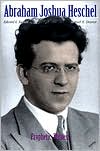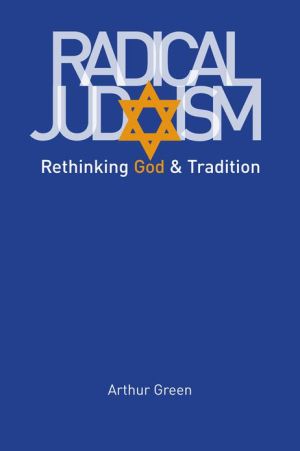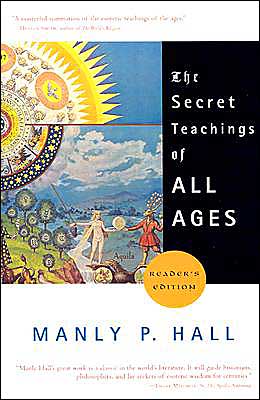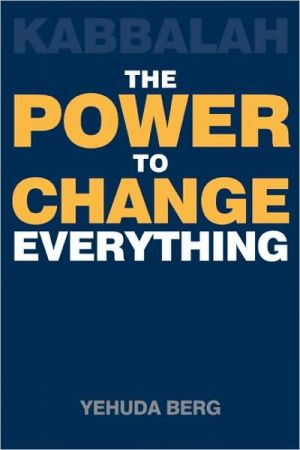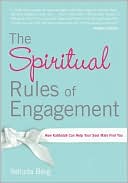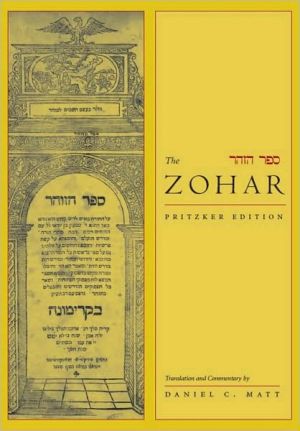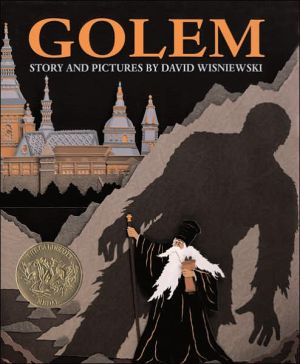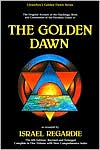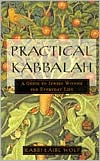Abraham Joshua Heschel: Prophetic Witness
This book is the first biography of Abraham Joshua Heschel, one of the outstanding Jewish thinkers of the twentieth century. It traces Heschel's life from his birth in Warsaw in 1907 to his emigration to the United States in 1940, describing his roots in Hasidic culture, his Polish and German experiences, and his relations with Martin Buber. A second volume will tell the story of Heschel's years in America until his death in 1972.
Search in google:
This book is the first biography of Abraham Joshua Heschel, one of the outstanding Jewish thinkers of the twentieth century. It traces Heschel's life from his birth in Warsaw in 1907 to his emigration to the United States in 1940, describing his roots in Hasidic culture, his Polish and German experiences, and his relations with Martin Buber. A second volume will tell the story of Heschel's years in America until his death in 1972. Publishers Weekly In 1951, Christian theologian Reinhold Niebuhr predicted that Abraham Joshua Heschel would "become a commanding and authoritative voice not only in the Jewish community but in the religious life of America." This first volume of a two-volume biography follows Heschel from his birth in Warsaw in 1907 to his emigration from Europe to America in 1940. From his early childhood, Heschel combined a love of learning with an intense piety. The authors follow Heschel's childhood study and mastery of classic Jewish texts, showing how this learning established the foundation of Heschel's later life and work in America. Greatly affected by his Hasidic upbringing (his father and uncle were Hasidic rebbes, and Heschel was expected to become one as well but he chose a life of scholarship and social activism instead), Heschel wove into his life a sense of God's holiness as well as a sense of the biblical prophets' sense of justice. The cultural richness of European Jewry prior to the Holocaust also greatly influenced Heschel. Kaplan and Dresner contend that their portrait will present Heschel as a "unique blend, that of a university-educated East European Jew inspired by God." This volume narrates Heschel's encounter with Martin Buber, with whom he engaged in lifelong debate about Judaism and ethics, and chronicles Heschel's stints as a teacher of religious philosophy in Berlin, Warsaw and London. While the staid, workmanlike style of this biography often fails to capture Heschel's fire and intensity, the authors nevertheless provide the most complete portrait to date of this remarkable religious figure.
Abraham Joshua Heschel \ Prophetic Witness \ \ By EDWARD K. KAPLAN SAMUEL H. DRESNER \ Yale University Press \ Copyright © 1998 Yale University\ All right reserved.\ ISBN: 978-0-300-07186-3 \ \ \ \ \ Chapter One \ Heschel's First Home (1907-1914) \ I was named after my grandfather, Reb Abraham Joshua Heschel-"the Apter Rav," and last great rebbe of Medzibozh. He was marvelous in all his ways, and it was as if the Baal Shem Tov had come to life in him.... The Apter Rav claimed that his soul had lived in several incarnations, and for his descendants it was as if he had never died. Heschel, A Passion for Truth (1973)\ HESCHEL'S GENEALOGY SUMMARIZES HIS CULTURAL INFLUENCES AND MAPS OUT the path he was expected to continue. This prehistory, a realm where eternal creeds and legends faced the harshness of current events, formed his family's expectations. His intricate family tree, in fact, shaped his primal identity. Children of distinguished Jewish dynasties often memorized their genealogy and recited it fluently, and, as an adult, he proudly traced his pedigree (in Yiddish, yikhus) back to the fifteenth century, telling an interviewer, "For seven generations, all my ancestors have been Hasidic rabbis." Ancestry was the foundation of his personality.\ Heschel recognized that his personal gifts and prophetic mission were defined by his family's locations, names, and legends. As a child or youth, he consecrated his ideals privately by drawing up, probably from memory, a list of 250 ancestors, starting with his father's lineage, then his mother's, following them back several centuries. In his Riverside Drive apartment hung a lithograph called the Baal Shem Tov's "Tree of Life," a genealogy of the movement printed in Warsaw in the 1920s and found in Hasidic prayer rooms and the homes of rebbes. To continue this "golden chain," as the holy tradition was called, meaningful names were repeated and passed from generation to generation.\ Legends and Legacies\ Heschel's dynastic prototype was Rabbi Abraham Joshua Heschel (1748-1825), the, rebbe of Apt (in Polish, Opatow). Five generations separated the boy from his namesake, known by the title of his book, Ohev Israel (Lover of the Jewish people). This "grandfather" (as Hasidim refer even to distant ancestors) was also called "the Apter Rav" because he exercised the legal authority of a community rabbi or Rav. Venerated for his diplomatic as well as spiritual skills, Rabbi Heschel of Apt mediated disputes among Hasidic leaders during a period of extreme factionalism. After the death of the founder, the Baal Shem Tov, Rabbi Heschel of Apt became a spokesman for the third Hasidic generation.\ Here was one mythic model for Heschel's personality, for the child was imbued with his ancestor's exalted conception of himself-not unusual in a zaddik (spiritual leader, literally, "righteous one") whose followers expected him to perform miracles. The Apter rebbe was said to possess supernatural qualities. Known for his ecstatic prayer, even to the point of speaking in tongues, he believed in reincarnation and claimed to remember standing at Mount Sinai as Moses received the Torah from God, even noticing the person standing next to him! Although he was not a kohen (of the priestly tribe), he felt that he possessed the soul of a high priest at the First Temple in Jerusalem. While leading his congregation in prayer on the Day of Atonement, he changed the text of the Avodah, which describes the Temple service, from "Thus did he (i.e., the High Priest) say" to "And thus did I say."\ Heschel himself claimed continuity with such models. Even his ancestor's name, following custom, sustained a spiritual continuum: the rebbe of Apt was said to be as kindhearted as Abraham, father of the Jewish people; as great a teacher as Joshua, the successor of Moses; and as learned as Rabbi Joshua Heschel of Kraków (d. 1664), the earliest namesake.\ R. Abraham Joshua Heschel of Apt (1748-1825)\ R. Yitzhak Meir Heschel of Zinkov (1770-1855)\ R. Meshullam Zusya Heschel of Zinkov (1813-1866)\ R. Abraham Joshua Heschel of Medzibozh (1832-1881)\ R. Moshe Mordecai Heschel of Pelzovizna (1873-1916)\ Rabbi and Professor Abraham Joshua Heschel of New York (1907-1972)\ Heschel's family came from Medzibozh (in Polish, Miedzyborz), where the Apter Rav was buried next to the Baal Shem Tov. As Heschel wrote: "I was born in Warsaw, Poland, but my cradle stood in Medzibozh (a small town in the province of Podolia, Ukraine), where the Baal Shem Tov, founder of the Hasidic movement, lived during the last twenty years of his life. That is where my father came from, and he continued to regard it as his home."\ According to Heschel, his earliest sense of identity formed from fantasies of this setting: "That little town so distant from Warsaw and yet so near was the place to which my childish imagination went on many journeys. Every step taken on the way was an answer to a prayer, and every stone was a memory of a marvel. For most of the wondrous deeds my father told about either happened in Medzibozh or were inspired by those mysterious men who lived there."\ Closer to actual memory, Heschel's grandfather-also named Abraham Joshua Heschel (1832-1881)-sustained the dynasty. He established his family in Medzibozh, where he became rebbe. Heschel's father, Moshe Mordecai (1873-1916), was born there, as were his uncles and aunts. Marriages with scions of other Hasidic clans and subsequent intermarriages within the same families comprise the vista of this Hasidic prince, expected to became a rebbe and forge more links in the golden chain.\ A Regal Heritage\ In the paternal tree, Heschel's father received his outlook from the noble Hasidic dynasty of Rabbi Israel Friedman (1797-1850), rebbe of Ruzhin (in Polish, Radzyn). Rabbi Israel, Heschel's father's great-grandfather, traced his ancestry back to the biblical King David, and some devotees even considered him to be a reincarnation of the Baal Shem Tov. It was said that the Apter Rav honored the young Israel Friedman by picking up his gartel (ritual belt) which had dropped, saying that it was precious as a wrapping for the Torah. Some Gentiles respected him as "King of the Jews."\ Stories also circulated about how the Ruzhiner rebbe was honored by Rabbi Levi Yitzhak of Berditchev (1740-1810), another Hasidic master, a close disciple of Dov Baer, known as the Maggid (preacher) of Mezeritch (1710-1772), the successor of the Baal Shem Tov. In fact, on his mother's side, Heschel was related to Levi Yitzhak, a learned, compassionate man known for his love of all Jews.\ Yet Israel of Ruzhin was a controversial figure because of his wealth and luxurious style of living. After all, the little towns in the Jewish Pale of Settlement were invariably poor. Adversaries were disgusted at the opulence of the Ruzhiner rebbe's court, whereas believers revered his hidden piety and compassion: "On the outside wonderful decorations of gold and silver, carriages hitched to powerful horses, and inside a broken heart and tortured body, which relished nothing of this world." Five of his sons married daughters of other Hasidic dynasties and established their own courts in Sadagora, Tchortkov, and Husyatin.\ Among these spiritual alliances were the Heschels. Abraham Joshua Heschel of Medzibozh (Heschel's grandfather), married Leah Rachel Friedman, a daughter of the Ruzhiner rebbe's oldest son, Sholem Joseph, rebbe of Sadagora. The bridegroom remained in Sadagora with his in-laws for about fifteen years of board and lodging (in Yiddish, kest), a widespread custom allowing sons-in-law to continue their studies and to incorporate the bride's traditions. The old Ruzhiner rebbe often visited them, and so Heschel's grandfather enjoyed the privilege, as the saying goes, of "eating at the Ruzhiner's table."\ Later, Heschel's grandfather, after replacing his own father as rebbe of Zinkov, established his court in Medzibozh. His seven children were born there-Heschel's uncles and aunts, and his father, Moshe Mordecai Heschel.\ After the death of Heschel's grandfather, the story becomes more complicated. His widow, Leah Rachel Friedman, returned to her family in Sadagora. Following custom, she married Rabbi Dovid Moshe Friedman (1828-1904), one of her father's younger brothers, himself recently widowed. Dovid Moshe Friedman was the rebbe of Tchortkov (in Polish, Czortkow), whose court was established in a castle previously owned by the counts of Borkowski. Heschel's father was about eight years old at the time.\ R. Israel Friedman of Ruzhin (1797-1850)\ R. Sholem Joseph Friedman of Sadagora (1813-1851)\ Leah Rachel Friedman m.(1) R. Ablraham Joshua Heschel of Medzibozh (1832-1881)\ m.(2) R. Dovid Moshe Friedman of Tchortkov (1828-1904)\ R. Moshe Mordecai Heschel of Pelzovizna (1873-1916)\ Rabbi and Professor Abraham Joshua Heschel of New York (1907-1972)\ In Tchortkov, the Heschel children grew up in a community accustomed to miracles. Dovid Moshe, who nurtured and guided them, was a saintly man. His Hasidic court was sumptuous, but he led an ascetic life of prayer and study. It was said that at his birth the Ruzhiner rebbe exclaimed: "I have brought you a soul which will lead Jewish souls to their heavenly father." Stories circulated about uncanny happenings. On the Sabbath, "Awe and admiration prevailed in the prayerhouse when [Dovid Moshe] said kiddush [the blessing over the wine at the beginning of the Sabbath], and the wine in his goblet bubbled in a wondrous manner. He was always closed up in his room, separated even from his family. He slept only two hours at night."\ During his youth in Tchortkov, Moshe Mordecai memorized anecdotes and legends meticulously preserved from the beginning of the Hasidic movement; years later he taught them to his young son, Abraham Joshua, who was encouraged to emulate a regal attitude. People who knew the ways of Ruzhin, and its descendants, observed that Heschel, even after he left Warsaw at age eighteen, had the bearing of a rebbe. Ruzhin was one cultural source of this demeanor.\ Torah Study and Piety\ Heschel also absorbed the Lithuanian Hasidic tradition of his mother, Rivka Reizel Perlow (1874-1942). Her father, Rabbi Jacob Perlow (1847-1902), although born in Poland, was brought up in the home of his maternal grandfather, Shlomo Hayim of Koidanov (1797-1862), a great Lithuanian rebbe. At age fifteen, Heschel's grandfather married a descendant of Rabbi Levi Yitzhak of Berditchev, a mystic, Talmudic scholar, and lover of humanity who upheld compassion for suffering Jews even against God's strict judgment. Heschel was especially attached to this ancestor who interceded directly to pardon a sinner, calling the Creator to judgment in the Yiddish vernacular, rather than in Hebrew, the sacred tongue. The first time Heschel put on tefillin (phylacteries), for his bar mitzvah, he used those of Levi Yitzhak for the occasion.\ It was said that Heschel's mother and her twin brother were born of a miracle. Heschel's grandparents Jacob and Chaya Perlow had a daughter, but they yearned for a son to continue the dynasty. A relative advised them to leave Russia for Poland, where they would have sons. They eventually settled in Minsk-Mazowiecki (known by Jews as Novominsk), an industrial town located about nineteen miles from Warsaw. After a silver ruble, which had been blessed, was placed in the foundation of the bes-medresh (house of prayer and study), Chaya Perlow gave birth to twins, a boy and a girl, Alter Israel Shimon and Rivka Reizel-Heschel's uncle and mother."\ Heschel's parents-Moshe Mordecai Heschel and Rivka Reizel Perlow-were married in about 1890 in Novominsk, where they lived for ten years at the Hasidic court of the bride's father. It was a vital Jewish environment. Rabbi Perlow had built a large yeshiva, the first such Hasidic school of higher Torah learning in Poland, where hundreds of students came to live. (Hasidim usually preferred to send their boys to local schools while they continued to live at home.) Novominsk became such a popular pilgrimage that the authorities organized special trains to accommodate the large numbers of Hasidim who made the journey. The rebbe of Novominsk combined devotion to Torah study, Talmudic learning, and inner piety. He was reputed to inspire teshuvah ("turning" or repentance) by the very sound of his voice.\ Novominsk also fostered modern movements. Heschel's sisters and brother were born in this town, which included several Jewish cultures. By the 1890s considerable Zionist and social-democratic activity developed there, in addition to the eminent rabbinic presence. In 1902, after Jacob Perlow died, Rivka's twin brother, Alter Israel Shimon, at age twenty-eight, became rebbe of Novominsk. By then the "old Tchortkover rebbe" (as Dovid Moshe Friedman was known) advised his stepson Moshe Mordecai to relocate closer to Warsaw. An entirely different future became possible for their next child, Abraham Joshua Heschel.\ seen him do so often he raised his shoulders and his hands, palms up. "I would have told you about my father, the great Hasidic rabbi, blessed be his memory, who too was divorced. You see, you Christians are so vexed by your perfectionism. It is always your undoing." He continued to talk in this vein, and I felt the tears running down my cheeks. He was so right. And it was nice that a Jew was reminding a Christian that his salvation lay not in being sinless, but in accepting [God's] forgiveness. Without pausing, he wiped my face with his handkerchief. Then after again assuring me that God still loved me-"even as I do, and maybe more"-he said, "Now we shall continue to my apartment. I have just been given some excellent cognac."\ Heschel remained curious about his father's first, unfruitful marriage, for its details might further clarify his ancestry. His friend F. E. Rottenberg, a modern Orthodox rabbi also from distinguished Hasidic stock, speculated that Moshe Mordecai's first wife might have come from the Zhidachov dynasty, one of the most learned and kabbalistically expert lines.\ Heschel did not resolve these conjectures. But he never forgot his father telling him "how beautiful" and without conflict the separation had been. Over fifty years after the event, compassion for his anguished American friend revived this scene of Heschel's Warsaw childhood.\ Family and Father\ Abraham Joshua Heschel's parents, four sisters-Sarah Brakha, Esther Sima, Gittel, and Devorah Miriam-and brother, Jacob-were born in Novominsk. Around 1904, they moved to Warsaw's Pelzovizna district, a rather poor, predominantly Jewish area on the right bank of the Vistula River. There Heschel's father, Moshe Mordecai, established himself as a vinkl rebbe (a neighborhood or "corner rebbe"). His following was modest-until the world prepared for battle.\ (Continues...)\ \ \ \ \ Excerpted from Abraham Joshua Heschel by EDWARD K. KAPLAN SAMUEL H. DRESNER Copyright © 1998 by Yale University. Excerpted by permission.\ All rights reserved. No part of this excerpt may be reproduced or reprinted without permission in writing from the publisher.\ Excerpts are provided by Dial-A-Book Inc. solely for the personal use of visitors to this web site. \ \
Contents Introduction....................viiThe Heschel Dynasty....................xiThe Friedman Dynasty....................xiiThe Perlow Dynasty....................xiiiPart One Warsaw: Childhood and Adolescence....................11 Heschel's First Home (1907-1914)....................42 Early Studies and Catastrophes (1914-1917)....................213 "The Blessings of Humiliation" and Triumphal Adolescence (1917-1924)....................374 Expanding the Self Through Literature (1924-1926)....................56Part Two Vilna: The Jerusalem of Lithuania....................735 A Rebbe Among Revolutionaries (1925-1927)....................76Part Three Berlin: Europe in Crisis....................976 A Student in Berlin (1927-1931)....................1007 A Jewish Philosophical Mentor (1928-1931)....................1218 Poetic Vision and Prophetic Sympathy (1928-1931)....................1409 Paradigm Shift (1929-1931)....................15310 God's Active Presence (1931-1932)....................16211 A Year of Grief and Rage (1933)....................17212 A Poet's Self-Portrait (Winter 1933-1934)....................18213 Spiritual and Intellectual Biographies: Koigen and Maimonides (1934-1935)....................19414 The German Jewish Renaissance (1934-1935)....................20815 Alliance with Martin Buber (June-December 1935)....................21816 Mission Defined (January-September 1936)....................229Part Four Frankfurt, the War, and Exile....................24117 Teaching in Times of Crisis (September 1936-December 1937)....................24418A Prophetic Witness (December 1937-March 1938)....................25619 "Out of the Depths" (March-October 1938)....................26520 Struggling to Escape (November 1938-July 1939)....................27621 Departure and Deliverance (1939-1940)....................28822 Epilogue....................304Notes....................309References....................361Permissions and Credits....................385Acknowledgments....................387Index....................389
\ David Novak". . . an exciting read: well written, accurate, and sympathetic without being hagiographic. . . . it tells the reader not only much about Heschel''s fascinating life in America but also just as much about the American religious and intellectual scene from 1940 to 1972."-David Novak, First Things\ — First Things\ \ \ \ \ \ First Things". . . an exciting read: well written, accurate, and sympathetic without being hagiographic. . . . it tells the reader not only much about Heschel''s fascinating life in America but also just as much about the American religious and intellectual scene from 1940 to 1972."—David Novak, First Things\ — David Novak\ \ \ \ Publishers WeeklyIn 1951, Christian theologian Reinhold Niebuhr predicted that Abraham Joshua Heschel would "become a commanding and authoritative voice not only in the Jewish community but in the religious life of America." This first volume of a two-volume biography follows Heschel from his birth in Warsaw in 1907 to his emigration from Europe to America in 1940. From his early childhood, Heschel combined a love of learning with an intense piety. The authors follow Heschel's childhood study and mastery of classic Jewish texts, showing how this learning established the foundation of Heschel's later life and work in America. Greatly affected by his Hasidic upbringing (his father and uncle were Hasidic rebbes, and Heschel was expected to become one as well but he chose a life of scholarship and social activism instead), Heschel wove into his life a sense of God's holiness as well as a sense of the biblical prophets' sense of justice. The cultural richness of European Jewry prior to the Holocaust also greatly influenced Heschel. Kaplan and Dresner contend that their portrait will present Heschel as a "unique blend, that of a university-educated East European Jew inspired by God." This volume narrates Heschel's encounter with Martin Buber, with whom he engaged in lifelong debate about Judaism and ethics, and chronicles Heschel's stints as a teacher of religious philosophy in Berlin, Warsaw and London. While the staid, workmanlike style of this biography often fails to capture Heschel's fire and intensity, the authors nevertheless provide the most complete portrait to date of this remarkable religious figure.\ \ \ \ \ Library JournalA social activist who marched alongside Martin Luther King in the 1960s, Heschel (1907-72), one of the foremost Jewish philosophers of our century, revitalized religious thought with his unique writings and insights. This first volume details Heschel's life in Europe until his departure to America and freedom just as the Nazi net was closing in. Heschel, born in Warsaw in 1907 and descended from a prominent Hasidic family, was considered a prodigy from an early age. His friendship with Martin Buber--and their significant philosphical differences--forms some of the most fascinating material in this study. Kaplan (French and comparative lit., Brandeis Univ.) and Dresner, a retired philosophy professor, both students of Heschel, make a major contribution to the growing literature on Heschel with this first scholarly biography. Highly recommended for libraries with Judaic or strong religious studies holdings.--Paul M. Kaplan, Lake Villa Dist. Lib., Round Lake Beach, IL\ \ \ \ \ Jacob Neusner[Heschel's] . . .religious ideas. . .will ensure his place as a major figure in modern Jewish and Christian religous history. . . .The work is lovingly researched, but pages and pages are filled with information of marginal interest. . . .the important work awaits: Heschel's intellectual biography -- the only one that matters.\ — National Review\ \ \ \ \ Noah EfronHeschel's spiritual and intellectual coming of age emerge with great clarity. . . .By presenting his early years, Kaplan and Dresner have done much to bring a richer, more human Heschel back to us. This is an achievement of some moment [a] fine biography\ — The Boston Book Review\ \ \ \ \ Yehudah Mirsky...[E]legantly written...the product of years of dogged research. it tells a fascinating story and it unearths much little-known and rich material. It is clearly a labor of love.\ — The New Republic\ \ \ \ \ Kirkus ReviewsThe first part of a two-volume, comprehensive biography of one of the leading Jewish theologians of this century. This volume covers the influential Eastern European thinker's formative years until his arrival in the US. From the subtitle onward Kaplan (French and Comparative Literature/Brandeis Univ.) and Dresner (retired professor of philosophy at the Jewish Theological Seminary) are irritatingly fond of calling Abraham Joshua Heschel (d.1972) a "prophet." \ Furthermore, they reduce Heschel's own traditional religious observance to liberation theology and politics. Rabbi Heschel did march with Martin Luther King in Selma and actively opposed the Vietnam War, but if anything, this biography documents in its most compelling chapters the traditionalist Heschel's battle with the secularized Jewish Enlightenment's major ideas and scholars. It was this conflict that made him write, after his emigration from Europe at age 33, such classics of Jewish thought as Man Is Not Alone, God in Search of Man, and The Sabbath.\ Most significantly, Heschel opposed his mentor, Martin Buber, though he did so with characteristic humility and charm. Against the grain of the Kantian atheists who dominated intellectual discussion at the University of Berlin (where he just managed his doctorate under a Nazi rector), Heschel's main concern was not secularism as much as reductionism, the tendency to explain away religious phenomena (such as prophetic inspiration) in human or scientific terms. Heschel insisted that "divine revelation validated Jewish law" and his "life's mission [was] to maintain a Jewish way of thinking."\ In an otherwise dry and academic book, the described clashesbetween this descendant of Hasidic masters and secular humanists like Berlin's David Koigen liven things up. Despite its flaws, this is the first half of a solid biography of one the most important defenders of faith and ethics in modern theology.\ \ \
